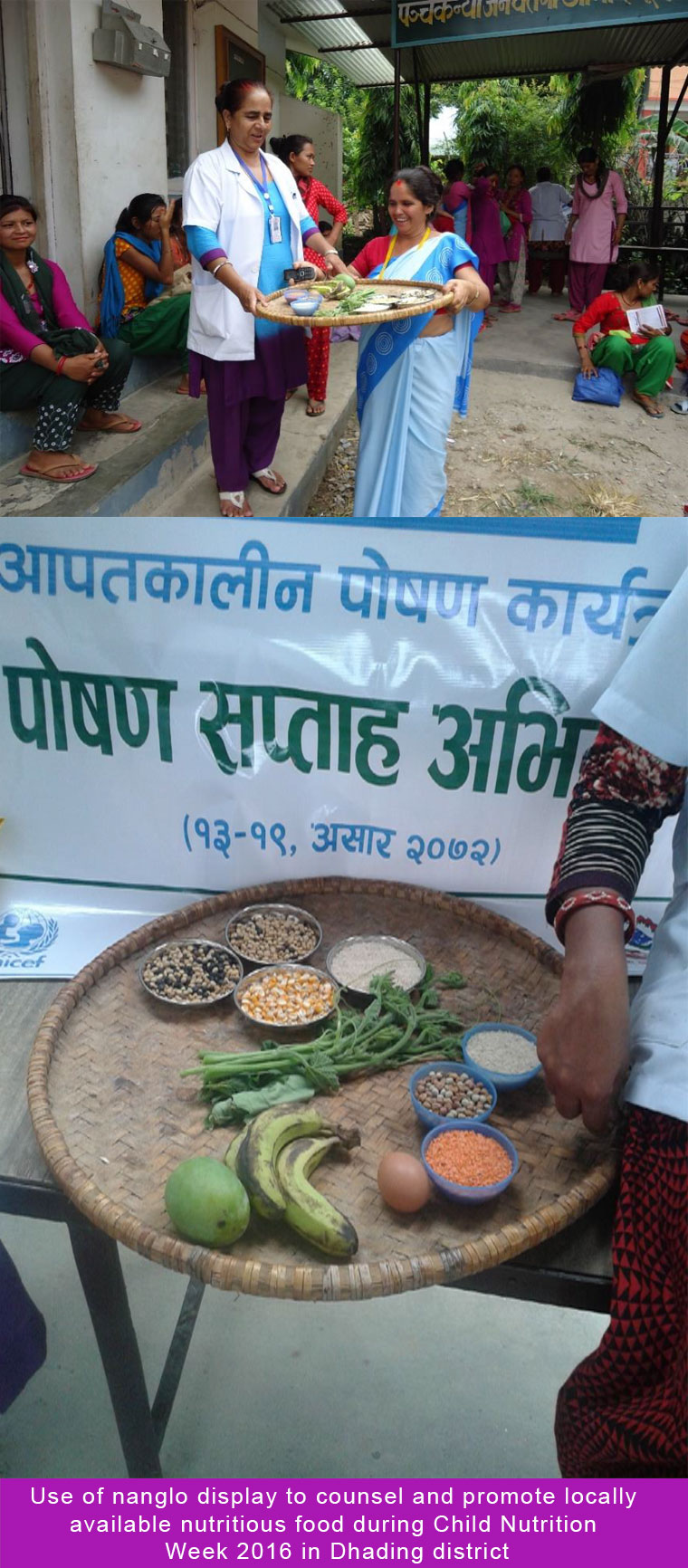National Vitamin A Program (NVAP) of Nepal is considered as one of the most successful programs worldwide. One of the significant factors which led to the success of NVAP were methods used for the promotion of vitamin A program.
In the early nineties, two separate research projects were conducted in Nepal to determine the impact of high dose (200, 000 I.U.) vitamin A supplementation on child health and mortality: Nepal Nutrition Intervention Project-Sarlahi (NNIPS -1) conducted by Johns Hopkins University (West, ET. Al. 1991) and the Jumla Community Health Project conducted by JSI (Daulaire ET. Al. 1992). Both these studies showed a significant reduction (26 -30%) in child mortality rates for children 6 – 60 months through regular vitamin A supplementation. During that time, the under-five mortality rate in Nepal was 165 per thousand live births thereby, motivating the government to adopt a program which could lead to a significant reduction in child deaths. Thus, the preceding Ministry of Health & Population launched the National Vitamin A Program in 1993. USAID/Nepal agreed to fund the implementation of the Ministry of Health and Population’s National Vitamin A Program (NVAP) through a Technical Assistance Group later called “NTAG” (Nepali Technical Assistance Group) in 32 priority districts from 1993 to 1997. UNICEF offered to supply Vitamin A capsules and Information, Education
and Communication (IEC) materials. After the highly successful implementation of the program in the original 32 priority districts, the MOHP expanded the program in all 75 districts by October 2002 with the technical support from NTAG and funding support from different donor agencies (USAID, UNICEF, JSI, AusAID).
The NVAP was implemented with primarily three strategies: semi-annual distribution of high-dose vitamin A capsules to pre-school children (6-59 months) through Female Community Health Volunteers (FCHVs), vitamin A case treatment for xerophthalmia, measles, severe malnutrition, and prolonged diarrhoea through health facilities, and Information, Education & Communication (IEC) campaigns to increase the awareness of vitamin A deficiency (VAD) and intake of vitamin A-rich foods.
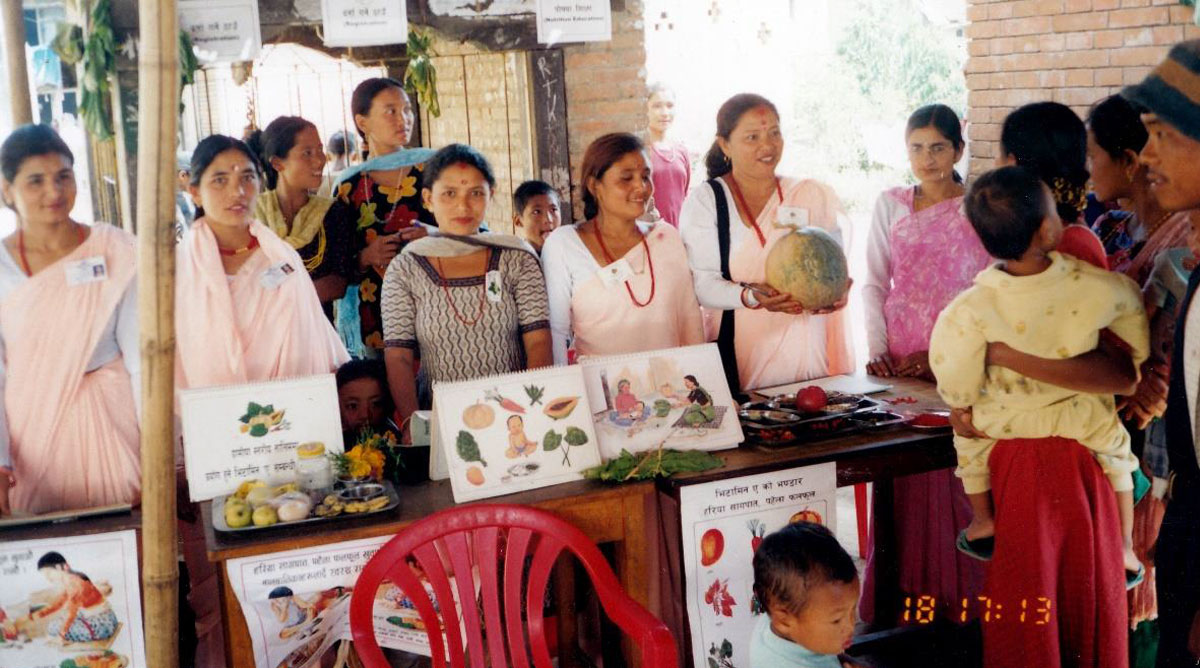
The IEC promotional activities concentrated on:
a) Creating awareness about NVAP and the capsule supplementation days
b) Imparting nutrition education by displaying locally available vitamin A rich foods, organizing rallies, magic shows, street dramas etc.
c) Instilling ownership about NVAP by engendering a feeling of respect for the FCHVs and leading to a tremendous response to the program by using various communication channels such as radio, television, print media, etc.
The magic show was one of the most effective ways to communicate with the community people for the promotion of vitamin A rich food. Magicians prepared their acts based on promotional messages of vitamin A supplementation as well as intake of vitamin A rich food.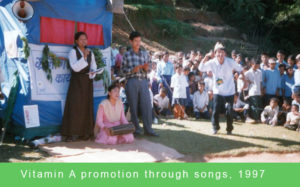

Besides magic shows, street drama, song competition, quiz contests were also some of the other means of promoting NVAP.
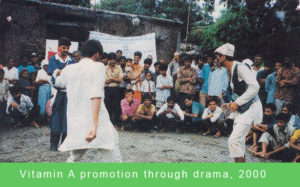
Rallies, where community people were directly and actively involved, were also used as one of the promotional activity during NVAP. Health Mothers’ Groups, School Children, and FCHVs rallied prior to the vitamin A distribution rounds to alert the community about the distribution event and to promote messages related to vitamin A.
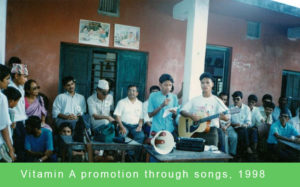
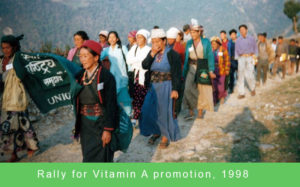
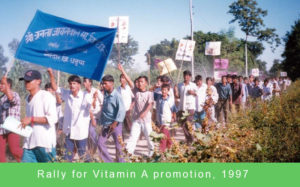
Likewise, promotional activities also included wall paintings and miking at public places.
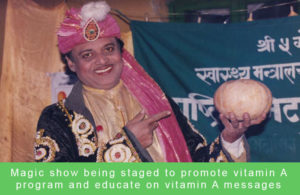
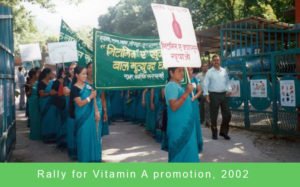
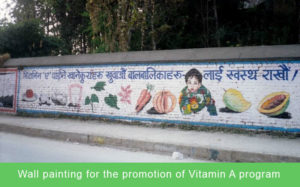
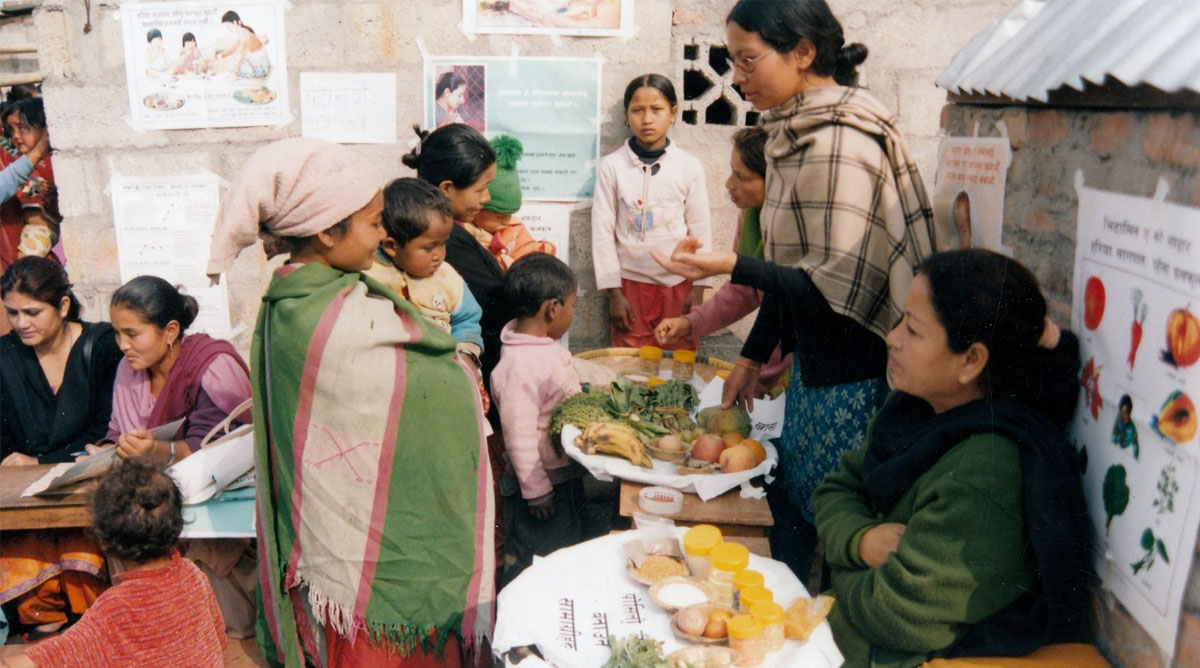
Nanglo Display:
Display of locally available foods has been the best promotional method to address one of the NVAP’s objectives i.e., to increase the awareness of vitamin A deficiency and intake of vitamin A-rich foods.
During the implementing phase of NVAP, FCHVs were provided with training on the importance of A, essential nutrition education messages and practical training on how to conduct the distribution rounds. These training also orient them in providing nutrition education to the parents/caretakers to promote better dietary habits during the regular vitamin A capsule distribution days. In that event, FCHVs display locally available food in a nanglo (a flat round woven tray madeup of bamboo). With the aid of FCHV flipchart and nanglo display, they provided nutrition education to the parents/caretakers during the capsule distribution days.
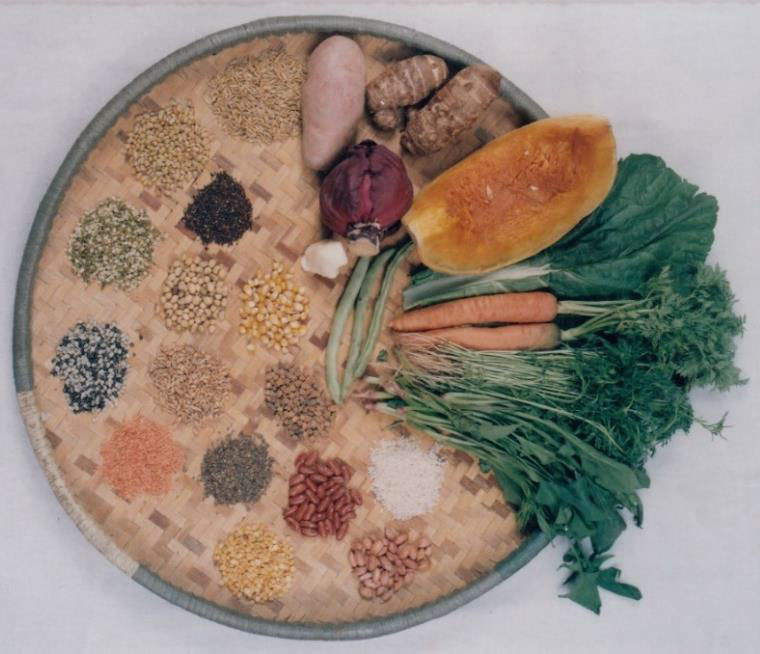
Nanglo display was started from the beginning of Vitamin A campaign (since 1996). NTAG being the implementing organization of vitamin Aprogram, conceptualized and initiated the idea of Nanglo display for nutrition education.
The main objective of Nanglo display was to promote locally available nutrition-rich foods. Likewise, it was also an effective tool to bring awareness and sensitize community people to consume locally available foods and its importance for the improved nutritional status.
Nanglo display is continued as a part of nutrition promotional activities in different programs and activities carried out by NTAG. It includes programs like Suaahara I, Suaahara II, emergency nutrition, SABAL, PAHAL, Anukulan etc. Moreover, it has also been recognized as the best tool for nutrition education in different training, conferences, nutrition exhibitions and demonstrations. Nanglo display was used more rigorously during the biannual distribution of vitamin A capsules every year onwards. This promotion method was very efficient as Nanglo was easily available in every household in the community and the foods used were grown in their backyard (kitchen garden) and need not require any additional financial support. Therefore, this tool proved to be an efficient tool for promotion of locally available nutrition-rich foods.
Since then, Nanglo display is being widely used throughout the nation and still, in these years, this method has been adapted by FCHVs to create awareness and sensitize people about the locally available nutrition-rich foods and consumption of diversified food required for improved nutritional status.
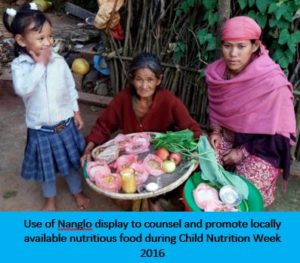
The devastating earthquake on 25th April & 12th May 2015 caused an extensive destruction and loss of many lives in Nepal. The earthquakes left many children and women vulnerable to nutritional deficiencies especially in 14 severely earthquake-affected districts (Gorkha, Kavrepalanchwok, Dhading, Nuwakot, Rasuwa, Sindhupalchwok, Dolakha, Ramechhap, Okhaldhunga, Makwanpur, Sindhuli, Kathmandu, Bhaktapur and Lalitpur) as identified by the Government of Nepal (GoN). NTAG, under UNICEF’s technical/financial support and leadership of Child Health Division (CHD) of Ministry of Health (MoH) along with District/Public Health Office (D/PHO), worked in Humanitarian Nutrition Assistance Program of UNICEF, in 5 (Dhading, Gorkha, Kavre, Sindhupalchowk&Dolakha) out of 14 severely earthquake-affected districts. During the implementation of humanitarian nutrition program activities, Child Nutrition Week (CNW) was celebrated incorporating the regular vitamin A campaign along the distribution of Multiple Micronutrient Powder and Mid-Upper Arm Circumference (MUAC) measurements of women and children of the districts. The same method of nanglo display of nutritious food were used to provide counselling to the parents/caretakers.
